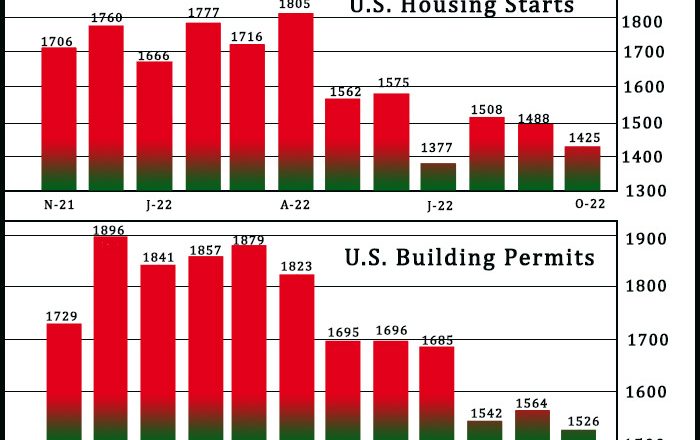U.S. Housing Starts Show Notable Decrease In October, Building Permits Pull Back Sharply
New residential construction in the U.S. showed a notable decrease in the month of October, the Commerce Department revealed in a report released on Thursday.
The report said housing starts tumbled by 4.2 percent to an annual rate of 1.425 million in October after falling by 1.3 percent to an upwardly revised rate of 1.488 million in September.
Economists had expected housing starts to slump by 2.0 percent to an annual rate of 1.410 million from the 1.439 million originally reported for the previous month.
Single-family housing starts plunged by 6.1 percent to an annual rate of 855,000, while multi-family housing stocks slid by 1.2 percent to an annual rate of 570,000.
While the report also showed significant decreases in housing starts in the Northeast, Midwest and West, housing starts in the South rebounded.
The Commerce Department also said building permits dove by 2.4 percent to an annual rate of 1.526 million in October after jumping by 1.4 percent to a rate of 1.564 million in September.
Building permits, an indicator of future housing demand, were expected to plunge by 3.3 percent to an annual rate of 1.512 million.
Single-family building permits tumbled by 3.6 percent to an annual rate of 839,000, while multi-family building permits fell by 1.0 percent to an annual rate of 687,000.
The pullback by building permits reflected notable decreases in permits issued in the Northeast and West.
“We expect caution among homebuilders, who are seeing homebuyers retreat to the sidelines, will weigh on housing starts through the middle of 2023,” said Nancy Vanden Houten, U.S. Lead Economist at Oxford Economics.
A separate report released by the National Association of Home Builders on Wednesday showed a continued decrease in U.S. homebuilder confidence in the month of November.
The report showed the NAHB/Wells Fargo Housing Market Index declined for the 11th consecutive month, slumping to 33 in November after tumbling to 38 in October. Economists had expected the index to dip to 36.
With the bigger than expected decrease, the index fell to its lowest reading since June 2012, with the exception of the onset of the pandemic in the spring of 2020.
Source: Read Full Article

